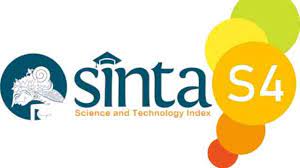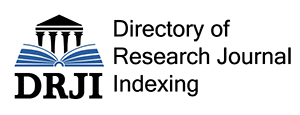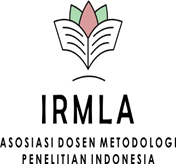Structural Equation Modeling Partial Least Square for Modeling the Relationship of Readiness, Creativity and Motivation to Students' Problem-Solving Ability
DOI:
https://doi.org/10.51276/edu.v4i1.317Keywords:
Readiness, Creativity, Problem Solving, MotivationAbstract
This study aims to determine how much influence readiness, creativity, and learning motivation have on problem-solving abilities. This study used a quantitative approach and was conducted in class X SMA Negeri 13 Ambon with 41 students selected by purposive sampling. Tests and questionnaires were used in data collection and analyzed with SMART PLS 4. The results showed that the external model loading factor and Cronbach's Alpha > 0.7 had high validity and reliability. The campaign, creativity, and motivation variables of 54.6% can explain the inner model of the dependent variable. Furthermore, for the hypothesis, there is a positive and significant effect of the readiness and motivation variables, while creativity has no effect and is not substantial. This research has implications for increasing students' cognitive readiness independently through motivation to develop creative ideas and connect the knowledge gained in solving problems
Downloads
Metrics
References
Agsya, F. M., Maimunah, M., & Roza, Y. (2019). Analisis Kemampuan Pemecahan Masalah Ditinjau Dari Motivasi Belajar Siswa Mts. Symmetry: Pasundan Journal of Research in Mathematics Learning and Education, 4(2), 31–44. https://doi.org/10.23969/symmetry.v4i2.2003
Alwiyah, D., & Imaniyati, N. (2018). Keterampilan Mengajar Guru Dan Kesiapan Belajar Siswa Sebagai Determinan Terhadap Hasil Belajar Siswa. Jurnal Manajerial, 17(1), 95. https://doi.org/10.17509/manajerial.v17i1.9767
Andhani, P. U. L., Handayanto, S. K., & Asim. (2017). Penerapan Model Pembelajaran Berbasis Masalah Berbantuan Media Web Untuk Seminar Nasional Fisika dan Pembelajarannya 2017. Seminar Nasional Fisika Dan Pembelajarannya 2017, 65–74. http://conference.um.ac.id/index.php/fis/article/view/146
Beghetto, R. A. (2018). Taking beautiful risks in education. Educational Leadership, 76(4), 18–24. https://eric.ed.gov/?id=EJ1198988
Budiarti, Y. (2015). Pengembangan kemampuan kreativitas dalam pembelajaran IPS. Jurnal Pendidikan Ekonomi UM Metro, 3(1), 61–72. https://doi.org/10.24127/ja.v3i1.143
Chai, C. S., Wang, X., & Xu, C. (2020). An Extended Theory of Planned Behavior for Modelling Chinese Secondary School Students' Intention to Learn Artificial Intelligence. Mathematics, 8(11). https://doi.org/10.3390/math8112089
Datu, A. R., Tumurang, H. J., & Sumilat, J. M. (2022). Pengaruh Motivasi Belajar Terhadap Hasil Belajar Siswa di Tengah Pandemi Covid-19. Jurnal Basicedu, 6(2), 1959–1965. https://doi.org/10.31004/basicedu.v6i2.2285
Djamarah, S. B. (2008). Psikologi pendidikan. Jakarta: Rineka Cipta.
Dwyer, C. P., Hogan, M. J., & Stewart, I. (2014). An integrated critical thinking framework for the 21st century. Thinking Skills and Creativity, pp. 12, 43–52. https://doi.org/https://doi.org/10.1016/j.tsc.2013.12.004
Fadlilah, C., & Siswono, T. Y. E. (2022). Kemampuan Berpikir Kreatif Siswa Asimilasi (Assimilating) Dan Konvergen (Converging) Dalam Memecahkan Masalah Numerasi. MATHEdunesa, 11(2), 548–561. https://doi.org/10.26740/mathedunesa.v11n2.p548-561
Febrianingsih, F. (2022). Kemampuan Berpikir Kreatif Siswa dalam Memecahkan Masalah Matematis. Mosharafa: Jurnal Pendidikan Matematika, 11(1), 119–130. https://doi.org/10.31980/mosharafa.v11i1.1174
Ghozali, I. (2008). Model persamaan struktural: Konsep dan aplikasi dengan program AMOS 16.0. Badan Penerbit Universitas Diponegoro.
Hao, Y. (2016). Middle school students’ flipped learning readiness in foreign language classrooms: Exploring its relationship with personal characteristics and individual circumstances. Computers in Human Behavior, pp. 59, 295–303. https://doi.org/https://doi.org/10.1016/j.chb.2016.01.031
Harris, A., & de Bruin, L. R. (2018). Secondary school creativity, teacher practice, and STEAM education: An international study. Journal of Educational Change, 19(2), 153–179. https://doi.org/10.1007/s10833-017-9311-2
Hasanah, F. J., & Firmansyah, D. (2022). Analisis Kemampuan Pemecahan Masalah Ditinjau Dari Motivasi Belajar Siswa. Jurnal Educatio FKIP UNMA, 8(1), 247–255. https://doi.org/10.31949/educatio.v8i1.1959
Henriksen, D., Henderson, M., Creely, E., Amélia, A., Cernochova, M., Dash, D., Davis, T., & Mishra, P. (2021). International Journal of Educational Research Open Creativity and risk-taking in teaching and learning settings : Insights from six international narratives. International Journal of Educational Research Open, 2–2 (November 2020), 100024. https://doi.org/10.1016/j.ijedro.2020.100024
Hernikasari, I., Ali, H., & Hadita, H. (2022). Model Citra Merek Melalui Kepuasan Pelanggan Bear Brand : Harga Dan Kualitas Produk. Jurnal Ilmu Manajemen Terapan, 3(3), 329–346. https://doi.org/https://doi.org/10.31933/jimt.v3i3.837
Irawan, I. P. E., Suharta, I. G. P., & Suparta, I. N. (2016). Faktor-faktor yang mempengaruhi kemampuan pemecahan masalah matematika: pengetahuan awal, apresiasi matematika, dan kecerdasan logis matematis. Prosiding Seminar Nasional MIPA.
Jiang, M. Y., & Jong, M. S. (2021). Learner Preparedness in Flipped Classroom : A Case Study of a Flipped Postgraduate Course. International Symposium on Educational Technology (ISET), May. https://doi.org/10.1109/ISET49818.2020.00022
Jong, M. S. (2020). Promoting Elementary Pupils’ Learning Motivation in Environmental Education with Mobile Inquiry-Oriented Ambience-Aware Fieldwork. International Journal of Environmental Research and Public Health, 17(7). https://doi.org/10.3390/ijerph17072504
Kadir, I. A., Machmud, T., Usman, K., & Katili, N. (2022). Analisis Kemampuan Berpikir Kreatif Matematis Siswa Pada Materi Segitiga. Jambura Journal of Mathematics Education, 3(2), 128–138. https://doi.org/10.34312/jmathedu.v3i2.16388
Kleiman, P. (2008). Towards transformation: conceptions of creativity in higher education. Innovations in Education and Teaching International, 45(3), 209–217. https://doi.org/10.1080/14703290802175966
Kurniawan, M. W., & Wuryandani, W. (2017). Pengaruh model pembelajaran berbasis masalah terhadap motivasi belajar dan hasil belajar PPKn. Jurnal Civics: Media Kajian Kewarganegaraan, 14(1), 10–22. https://doi.org/10.21831/civics.v14i1.14558
Lan, Y.J., Botha, A., Shang, J., & Jong, M. S. Y. (2018). Guest Editorial: Technology Enhanced Contextual Game-Based Language Learning. Journal of Educational Technology & Society, 21(3), 86–89. http://www.jstor.org/stable/26458509
Lestari, E. T. (2020). Cara Praktis Meningkatkan Motivasi Siswa Sekolah Dasar. Deepublish. https://books.google.co.id/books?hl=id&lr=&id=5mL2Dwaaqba
Li, K., & Keller, J. M. (2018). Use of the ARCS model in education: A literature review. Computers & Education, 122, 54–62. https://doi.org/https://doi.org/10.1016/j.compedu.2018.03.019
Lin, P., Chai, C., Jong, M. S., Dai, Y., Guo, Y., & Qin, J. (2021). Computers and Education : Artificial Intelligence Modeling the structural relationship among primary students ’ motivation to learn artificial intelligence. Computers and Education: Artificial Intelligence, 2(October 2020), 100006. https://doi.org/10.1016/j.caeai.2020.100006
Mulyani, D. (2013). Hubungan Kesiapan Belajar Siswa Dengan Prestasi Belajar. Jurnal Ilmiah Konseling, 2(1), 27–31. https://doi.org/https://doi.org/10.24036/0201321729-0-00
Munandar, S. C. U. (2009). Pengembangan kreativitas anak berbakat, Jakarta: PT. Rineka Cipta Dan Dep. Pendidikan Dan Kebudayaan.
Nurfitriyanti, M. (2016). Model pembelajaran project based learning terhadap kemampuan pemecahan masalah matematika. Formatif: Jurnal Ilmiah Pendidikan MIPA, 6(2). https://doi.org/http://dx.doi.org/10.30998/formatif.v6i2.950
Nusbaum, E. C., & Silvia, P. J. (2011). Are intelligence and creativity so different?: Fluid intelligence, executive processes, and strategy use in divergent thinking. Intelligence, 39(1), 36–45. https://doi.org/https://doi.org/10.1016/j.intell.2010.11.002
Pintrich, P. R. (2003). A Motivational Science Perspective on the Role of Student Motivation in Learning and Teaching Contexts. Journal of Educational Psychology, 95(4), 667–686. https://doi.org/10.1037/0022-0663.95.4.667
Rakhmat, J. (2005). Psikologi Komunikasi edisi revisi. In Bandung: Remaja Rosdakarya.
Ryan, R. M., & Deci, E. L. (2000). Intrinsic and Extrinsic Motivations: Classic Definitions and New Directions. Contemporary Educational Psychology, 25(1), 54–67. https://doi.org/https://doi.org/10.1006/ceps.1999.1020
Sirait, E. D. (2019). Pengaruh Gaya Dan Kebiasaan Belajar Terhadap. Jurnal Formatif, 7(3), 207–218. https://doi.org/http://dx.doi.org/10.30998/formatif.v7i3.2231
Syaharuddin, S., & Mutiani, M. (2020). Strategi Pembelajaran IPS: Konsep dan Aplikasi. Program Studi Pendidikan IPS Fakultas Keguruan dan Ilmu Pendidikan …. http://eprints.ulm.ac.id/8545/2/Mutiani 2020-IPS-100 X %281%29.pdf
Tania, L. (2017). pengembangan bahan ajar e-modul sebagai pendukung pembelajaran kurikulum 2013 pada materi ayat jurnal penyesuaian perusahaan jasa siswa kelas x akuntansi smk negeri 1 surabaya. Jurnal Pendidikan Akuntansi (JPAK), 5(2). https://ejournal.unesa.ac.id/index.php/jpak/article/view/21294
Ucar, H., & Kumtepe, A. T. (2020). Effects of the ARCS-V-based motivational strategies on online learners’ academic performance, motivation, volition, and course interest. Journal of Computer Assisted Learning, 36(3), 335–349. https://doi.org/https://doi.org/10.1111/jcal.12404
Zakaria, E., & Yusoff, N. (2009). Attitudes and problem-solving skills in algebra among Malaysian matriculation college students. European Journal of Social Sciences, 8(2), 232–245. https://www.researchgate.net/profile/Effandi-Zakaria/publication/278848273
Zubaidah, S. (2010). Berpikir Kritis: kemampuan berpikir tingkat tinggi yang dapat dikembangkan melalui pembelajaran sains. Makalah Seminar Nasional Sains Dengan Tema Optimalisasi Sains Untuk Memberdayakan Manusia. Pascasarjana Unesa, 16(1), 1–14. https://www.researchgate.net/profile/Siti-Zubaidah-7/publication/318040409
Downloads
Published
How to Cite
Issue
Section
License
Copyright (c) 2022 Mohamad Amin Lasaiba, Djamila Lasaiba, Arman Man Arfa, Irvan Lasaiba

This work is licensed under a Creative Commons Attribution-NonCommercial-NoDerivatives 4.0 International License.












































